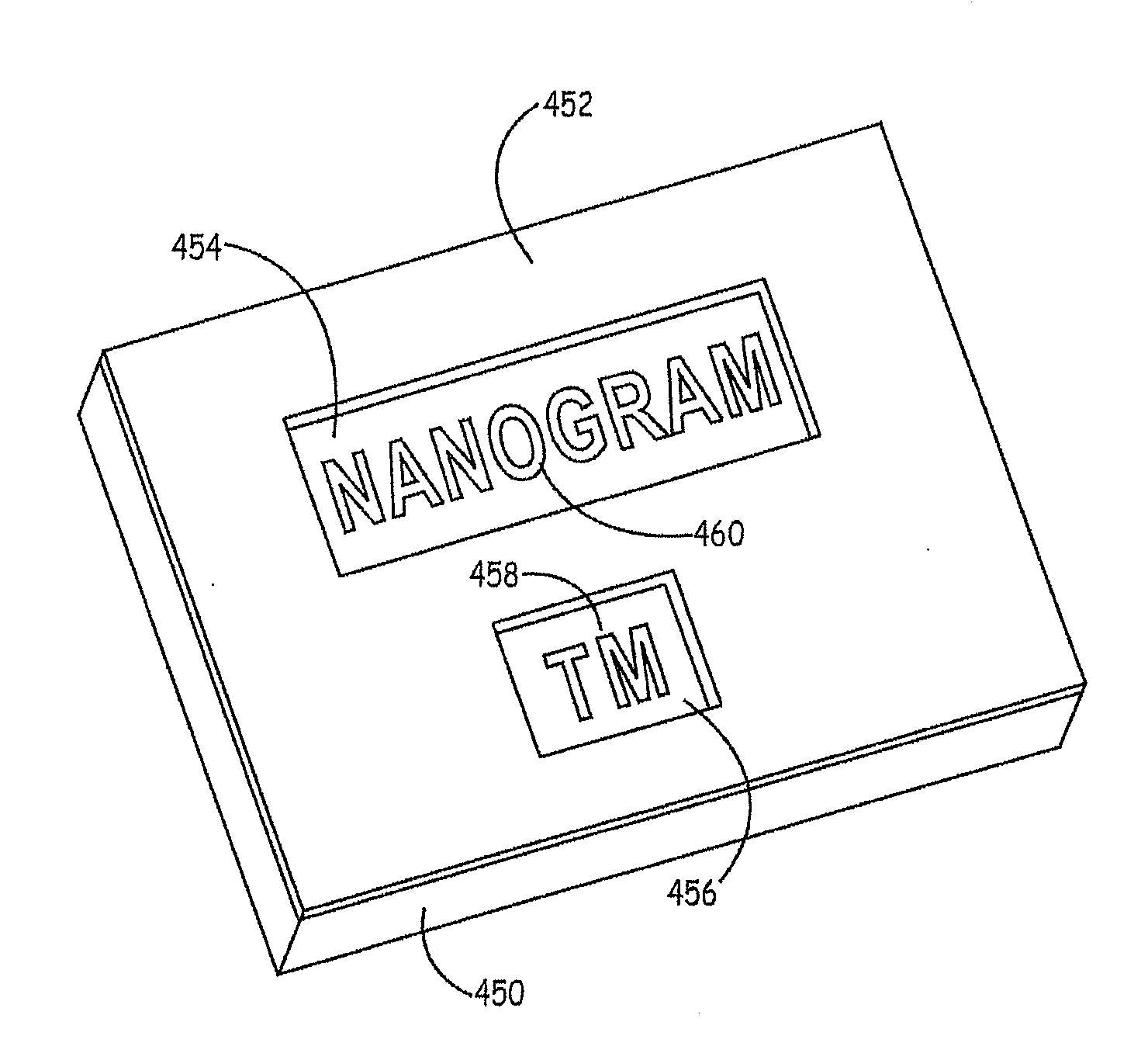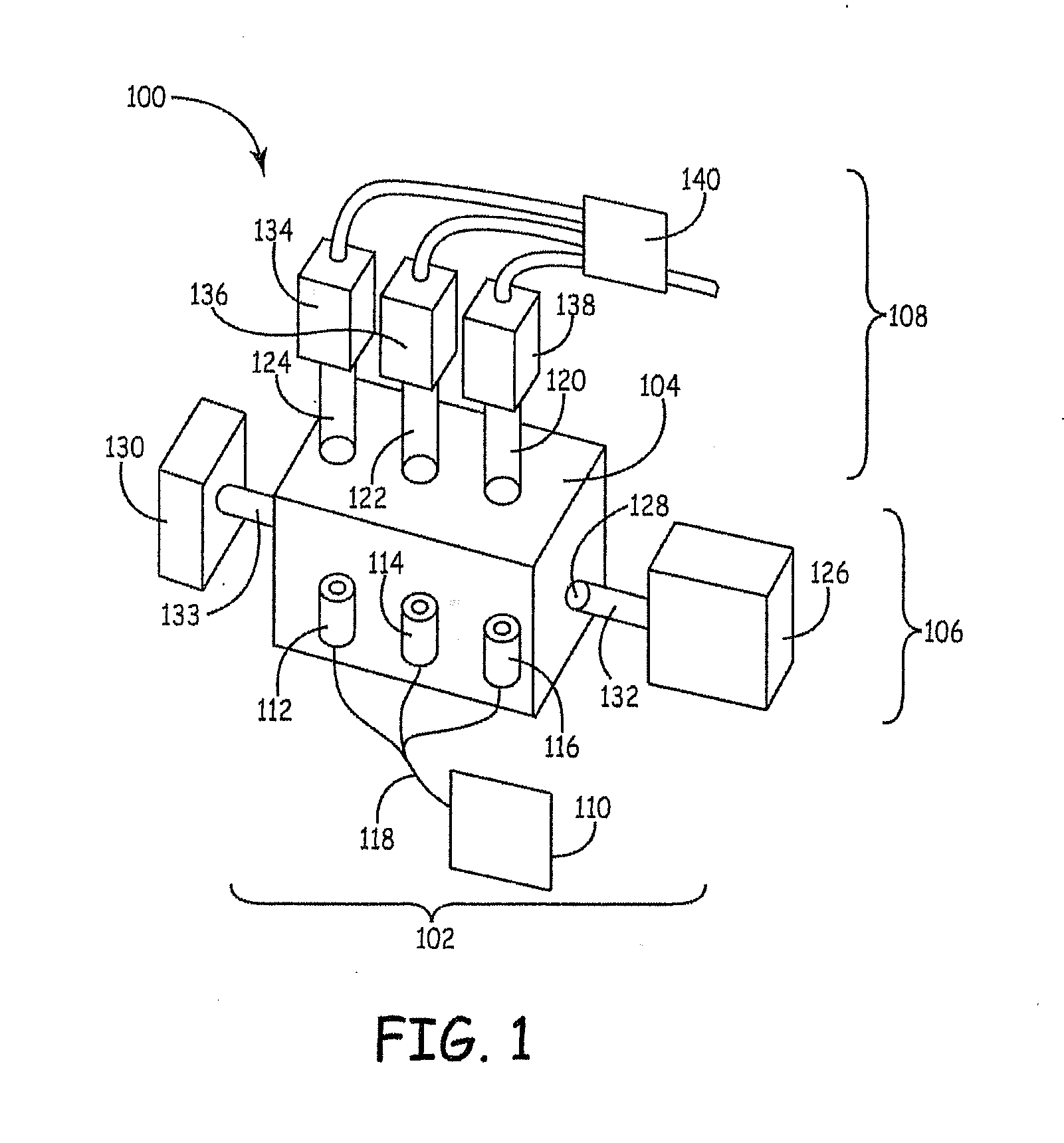Silicon/germanium nanoparticle inks, laser pyrolysis reactors for the synthesis of nanoparticles and associated methods
a technology of nanoparticles and inks, which is applied in the field of inorganic nanoparticle synthesis, can solve the problems of corresponding increase in the market of solar cells, and achieve the effect of reducing the exposure to metal contaminants
- Summary
- Abstract
- Description
- Claims
- Application Information
AI Technical Summary
Benefits of technology
Problems solved by technology
Method used
Image
Examples
example 1
Synthesis of Highly Doped Si Nanoparticles Using Laser Pyrolysis with Rectangular Nozzle and Air Knife Quenching
[0225]This example demonstrates the ability to synthesize highly doped silicon nanoparticles with high uniformity using laser pyrolysis.
[0226]A laser pyrolysis apparatus similar to FIG. 8 of published U.S. patent application 2009 / 0020411A to Holunga et al., entitled “Laser Pyrolysis With In-Flight Particle Manipulation for Powder Engineering,” incorporated herein by reference. The apparatus was equipped with an air knife to provide quenching of the particles entering the exhaust conduit.
[0227]Phosphine (PH3) was used as the phosphorous dopant source, and the phosphine gas was mixed with inert argon at a mole ratio of 91% Ar to 9% PH3. The silane precursor was mixed with the blend of Ar and phosphine precursor for delivery to the nozzle. A reactant delivery system similar to the system shown in FIG. 2 was used. The parameters for the synthesis of particles with two dopant l...
example 2
Synthesis of Highly N-Doped Si Nanoparticles Using Laser Pyrolysis with Annular Nozzle
[0229]This example demonstrates the ability to synthesize highly doped silicon nanoparticles with high uniformity using laser pyrolysis.
[0230]The apparatus was modified with a nozzle essentially as shown in FIGS. 3-6. Inert shielding gas was flowed through the inner tube and the central annular passage, and the silicon precursor (SiH4) and dopant precursor were flowed through the inner annular passage. Inert gas as an entrainment gas was flowed through the outer annular passage. Experiments were performed targeting different dopant levels.
[0231]As in example 1, phosphine (PH3) was used as the phosphorous dopant source, and the phosphine gas was mixed with inert argon at a mole ratio of 91% Ar to 9% PH3. The silane precursor was mixed with the blend of Ar and phosphene precursor for delivery to the nozzle. A reactant delivery system similar to the system shown in FIG. 2 was used. The parameters for ...
example 3
Synthesis of Boron Doped Si Nanoparticles Using Laser Pyrolysis with Annular Nozzle
[0235]This example demonstrates the ability to synthesize p-doped silicon nanoparticles with high uniformity using laser pyrolysis.
[0236]The laser pyrolysis was performed with an apparatus equipped with a nozzle essentially as shown in FIGS. 3-6. Inert shielding gas was flowed through the inner tube and the central annular passage, and the silicon precursor (SiH4) and dopant precursor were flowed through the inner annular passage. Inert gas as an entrainment gas was flowed through the outer annular passage. Experiments were performed targeting different dopant levels with one sample having a high boron dopant level and another sample having a low boron dopant level.
[0237]Diborane (B2H6) was used as the borane dopant source, and the diborane gas was mixed with inert argon at a selected mole ratio as indicated in the table below. The silane precursor was mixed with the blend of Ar and diborane precursor...
PUM
| Property | Measurement | Unit |
|---|---|---|
| average primary particle diameter | aaaaa | aaaaa |
| weight percent | aaaaa | aaaaa |
| average primary particle diameter | aaaaa | aaaaa |
Abstract
Description
Claims
Application Information
 Login to View More
Login to View More - R&D
- Intellectual Property
- Life Sciences
- Materials
- Tech Scout
- Unparalleled Data Quality
- Higher Quality Content
- 60% Fewer Hallucinations
Browse by: Latest US Patents, China's latest patents, Technical Efficacy Thesaurus, Application Domain, Technology Topic, Popular Technical Reports.
© 2025 PatSnap. All rights reserved.Legal|Privacy policy|Modern Slavery Act Transparency Statement|Sitemap|About US| Contact US: help@patsnap.com



